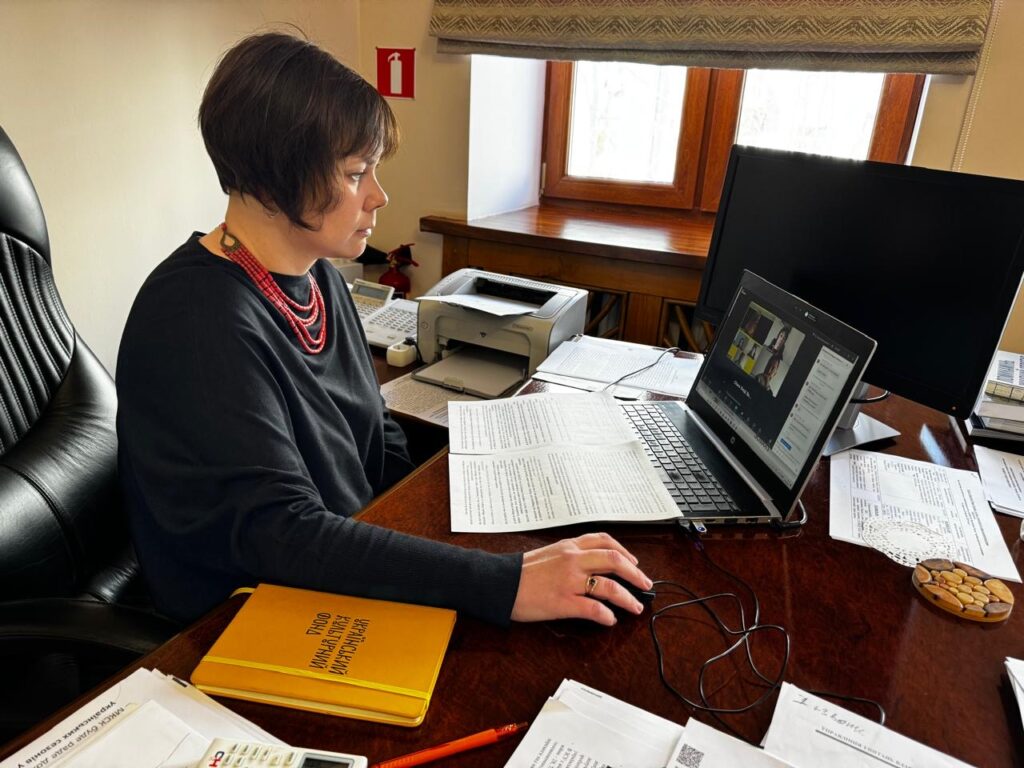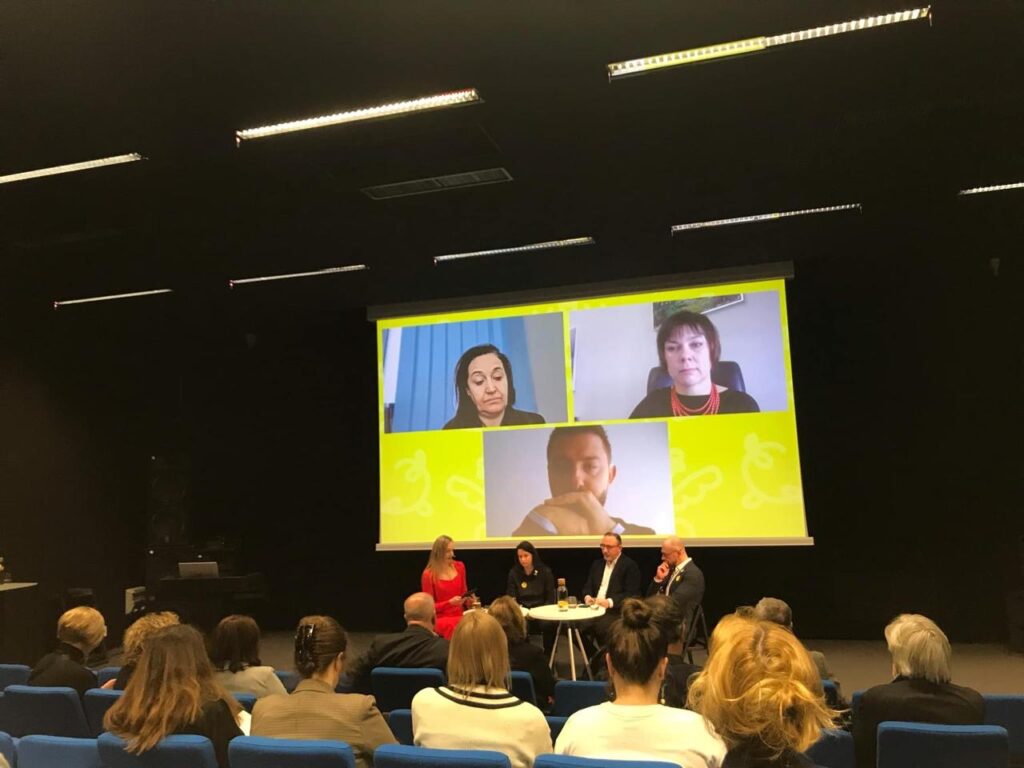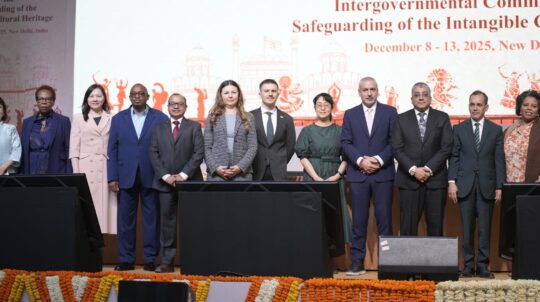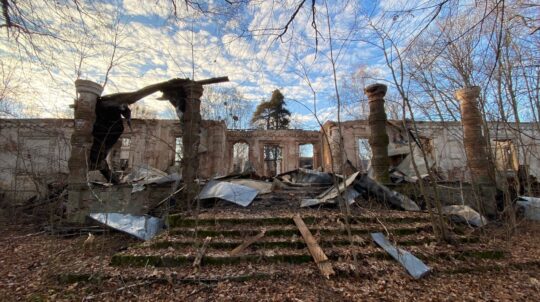On April 11, Vilnius hosted the third international conference of the European cultural project “UREHERIT: Architects for heritage in Ukraine. Recreating identity and memory”, organized in cooperation with the Architects Association of Lithuania. This year’s theme, “Reconstructing Ukraine: Heritage is home”, brought together experts, cultural leaders, and policymakers to discuss the important role of heritage in helping Ukraine recover and rebuild after the war.

The conference focused on key issues such as protecting heritage sites damaged by the war, involving communities in preservation efforts, and using architectural competitions to support thoughtful and sustainable restoration.
Galyna Grygorenko, First Deputy Minister of Culture and Strategic Communications of Ukraine, joined the conference remotely. Speaking during a panel on joint efforts to support Ukraine’s cultural heritage, she highlighted the main challenges facing the cultural sector and shared the Ministry’s priorities during the ongoing war.
“Since the beginning of russia’s full-scale invasion, Ukraine has been working systematically to document the destruction of cultural heritage, evacuate museum collections, and record damage. Cultural landmarks — symbols of national identity — have become intentional targets. Museums, theaters, and libraries in eastern regions near the front line have suffered the most, leaving many communities without access to cultural services. Still, people remain — and they continue to resist”, said Galyna Grygorenko.
She noted that Ukraine’s cultural sector has lost 20–30% of its workforce. Some professionals have left the country, while others have been displaced within Ukraine. On top of that, local funding shortages have made the situation even more difficult. These challenges put the entire cultural infrastructure at risk, making it essential to support culture not only as part of national identity but also as an element of national security.

In March 2025, Ukraine adopted its National Culture Strategy for 2025–2030, which identifies cultural heritage as a key strategic priority for strengthening long-term resilience.
“One of the Ministry’s main priorities is to continue evacuating and protecting museum collections, safeguarding damaged heritage sites and cultural infrastructure, and documenting war crimes to ensure accountability. We are working closely with international partners on all of these efforts”, she added.
Chiara Dezzi Bardeschi, Head of the UNESCO Office in Ukraine, also spoke at the conference, sharing insights into UNESCO’s ongoing cooperation with Ukrainian institutions since February 2022.
“Our work in Ukraine focuses on two main areas. The first is the physical protection of cultural heritage sites from war damage. Because the needs are so great, it’s important to set clear priorities and combine urgent actions with long-term planning. The second area is preparing for Ukraine’s recovery — this means investing in the creative sector, developing human potential, supporting education, and strengthening public institutions. The adoption of the national cultural strategy is a key step in planning a thoughtful, strategic recovery”, said Chiara Dezzi Bardeschi.
“UREHERIT: Architects for heritage in Ukraine. Recreating identity and memory” is a European cultural project focused on building expertise in heritage preservation, restoring culturally important sites and urban spaces, and strengthening local communities. The goal is to support the development of a democratic, sustainable, and forward-looking Ukraine — deeply rooted in its unique heritage and connected to a shared European cultural identity.
The project creates a platform for collaboration between architects, urban planners, landscape designers, and heritage experts from Ukraine and across Europe. Together, they work to protect and restore Ukraine’s cultural and natural heritage as a key part of the country’s recovery and future resilience.

